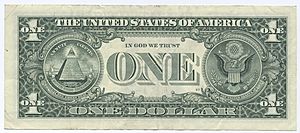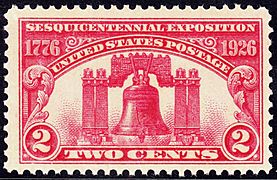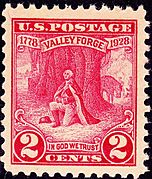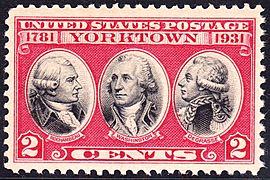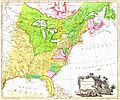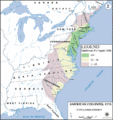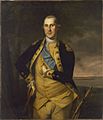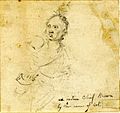American Revolutionary War facts for kids
Quick facts for kids American Revolutionary War |
|||||||||
|---|---|---|---|---|---|---|---|---|---|
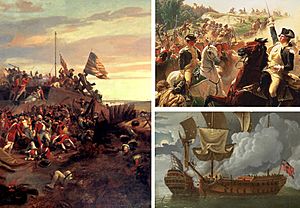 Left, Continental infantry at Redoubt 10, Yorktown; Washington rallying the broken center at Monmouth; USS Bonhomme Richard capturing HMS Serapis |
|||||||||
|
|||||||||
| Belligerents | |||||||||
|
Co-belligerents Combatants |
Combatants |
||||||||
| Commanders and leaders | |||||||||
|
|
|
||||||||
| Strength | |||||||||
|
|
||||||||
| Casualties and losses | |||||||||
|
|
||||||||
The American Revolutionary War was a big fight between Great Britain and its 13 colonies in North America. This war happened from 1775 to 1783. It was fought in North America and other parts of the world. The Continental Army, which was the army of the colonies, was led by George Washington. With help from France and other countries, they beat the armies of the British Empire.
After the war, the 13 colonies became independent. This meant they were no longer controlled by the British Empire. They joined together to form a new country called the United States of America. These 13 colonies became the first states of this new nation.
Contents
Why the American Revolution Started
The war began after many years of problems between the British Empire and the colonists in North America. These issues grew after the French and Indian War (also known as the Seven Years' War). People in the Thirteen Colonies were unhappy with many things the British Government did.
For example, the British government decided which countries the colonies could trade with. Many colonists wanted to choose their own trading partners. They wanted free trade.
New Taxes and Growing Anger
In 1765, the British Parliament needed money. They had a lot of debt from the French and Indian War. So, they passed a Law called the Stamp Act. This law made colonists buy special stamps for legal papers, newspapers, and even playing cards. The money from these stamps went to the King. The colonies did not agree with this law and refused to follow it.
The colonists kept refusing to do what the King wanted. Events like the Boston Tea Party and the Boston Massacre made people even angrier. The British sent more soldiers, called "Red Coats" by the colonists, to keep control. Sometimes, these soldiers had to fight. In 1774, the British passed the Intolerable Acts. These laws were meant to punish the colonists in Boston for the Boston Tea Party.
Patriots vs. Loyalists
Not all colonists wanted to leave the British Empire. Some were called Loyalists, or Tories. They stayed loyal to Great Britain. They did not want to change their views. Others were called Patriots, or Whigs. They wanted independence from Britain. Before the war, most people in America were Loyalists. But after the war, most became Patriots.
Many colonists wrote letters and pamphlets about their feelings. Thomas Paine wrote a famous pamphlet called Common Sense. It argued for independence from Britain. Other important colonial leaders, like Benjamin Franklin, John Adams, and Thomas Jefferson, also wanted independence.
Key Battles in the North
The first fights of the American Revolutionary War were the Battles of Lexington and Concord. One of the first major battles was the Battle of Bunker Hill in 1775. After this, the British controlled Boston. Around this time, the Second Continental Congress asked King George III for peace, but he refused. They then named George Washington as the head of the army. In early 1776, Washington's army forced the British out of Boston.
New York and New Jersey Campaigns
A few months later, the Continental Army and British troops fought in the New York and New Jersey Campaign. During the battles in New York, the British started using Hessian troops. These soldiers came from Germany. The colonists lost New York, and the British held it for the rest of the war. However, Washington managed to keep most of his army together. In late 1776 and early 1777, Washington crossed the Delaware River. He defeated the Hessians at Trenton and the British at Princeton.
Philadelphia and Saratoga
In 1777, the British attacked Philadelphia, which was the American capital at the time. Two battles were fought over Philadelphia: Brandywine and Germantown. Again, the Americans lost a major city, but Washington saved most of his army. Around this time, a French nobleman named Lafayette joined the American Army. In 1778, the British left Philadelphia. From 1778 to 1781, most battles between Washington and the British did not have a clear winner.
One of the most important battles was the Battle of Saratoga in 1777. American soldiers, led by Horatio Gates, forced a British army to surrender. This victory convinced France and Spain to join the war on the American side. These powerful countries then fought the British around the world. From 1778 to 1780, there was also fighting in the western parts of the colonies.
The Scottish naval officer John Paul Jones, fighting for the Americans, won several sea battles against the British. However, the French navy did most of the fighting at sea. The Americans also tried to capture Canada several times, but they were not successful.
Battles in the South
In 1779, major fighting moved to Georgia and South Carolina. As the fighting spread north, General Nathanael Greene led the American campaign. He helped many people in the South become Patriots instead of Loyalists. He also won several battles against the British.
The Battle of Yorktown
In 1781, Washington and French general Jean Rochambeau led an attack against British troops in Yorktown, Virginia. This was known as the Battle of Yorktown. When their soldiers lost this battle, the British army surrendered.
Even after Yorktown, the British continued to fight the French and Spanish for two more years. They won battles in India, Gibraltar, and other places.
The End of the War
The American Revolution ended in 1783 when a peace treaty was signed in Paris, France. In the Treaty of Paris, the British King, George III, accepted that the colonies were independent. He recognized the new country as the United States of America.
The treaty also gave the new country all the land Britain claimed west of the Appalachians, as far as the Mississippi River. This land later became part of the U.S. Many Loyalists, who had stayed loyal to Britain, moved to Canada.
Casualties of the War
It is hard to know the exact number of people killed or wounded in the American Revolution. This is common for wars from the 1700s. Reports of casualties were not kept as well as they are today.
Estimates suggest around 25,000 Americans died. About 27,294 British and German soldiers and sailors also died.
The Revolution's Impact Beyond America
The American Revolution had a big impact on Great Britain, Ireland, the Netherlands, and France. Many British and Irish politicians, called Whigs, openly supported the American Patriots. The revolution also taught many Europeans about politics, especially those who later became active during the French Revolution.
The American Revolution set an example for the rest of the world. For the first time in the Western world, a group of people successfully overthrew the rule of a major country. This revolution encouraged people in other countries to fight for their own rights. It showed them that they could also succeed, just like the Americans.
Later, in the early 1800s, revolutions happened in the colonies in South America against Portugal and Spain. Years after that, similar revolutions took place in Asia and other regions.
Lasting Effects
The American Revolution created the United States. It gave its citizens many civil liberties, which are freedoms and rights. It also showed that it was possible to overthrow both monarchies (rule by a king or queen) and colonial governments. The United States has the world's oldest written constitution. The constitutions of other free countries often look very similar to the U.S. Constitution. The American Revolution inspired the French, Haitian, and Latin American Revolutions, and others even into modern times.
Even though the Revolution removed many types of unfairness, it did not change the status of women much. This was true even though women played a role in winning independence. Most importantly, it did not end slavery. Slavery continued to be a serious social and political problem. It caused divisions that eventually led to the Civil War. Many people felt it was wrong to demand liberty for some, but deny it to others. However, the southern states depended on slave labor, so ending slavery was a huge challenge.
Between 1774 and 1780, many states stopped allowing new slaves to be brought in. But slavery itself continued. In 1782, Virginia passed a law allowing slave owners to free their slaves. Over the next eight years, more than 10,000 slaves gained their freedom. With help from Benjamin Franklin, the Quakers asked Congress to end slavery in 1790. The number of groups working to end slavery grew a lot. By 1804, all the northern states had outlawed it. However, even people like John Adams, who thought slavery was terrible, were against the 1790 request. They saw it as a threat to the unity of the new country. In 1808, Thomas Jefferson passed a law banning the import of slaves. But he allowed the buying and selling of slaves within the country to continue. He argued that the federal government could not control what individual states did about slavery.
Remembering the Revolutionary War
After the first U.S. postage stamp was made in 1849, the U.S. Post Office often released special stamps. These stamps celebrated important people and events from the Revolutionary War. However, it took more than 140 years after the Revolution for any stamp to be issued that honored the war itself. The first such stamp was the 'Liberty Bell' stamp in 1926.
- Selected issues:
Related pages
- Timeline of the American Revolution
- Intolerable Acts
- George Washington's crossing of the Delaware River
- Battle of Trenton
- Battle of Bunker Hill
- Battles of Lexington and Concord
- New York and New Jersey Campaign
- Battle of Brandywine
- Battle of Germantown
- Battle of Saratoga
- Battle of Yorktown
- Capture of Fort Ticonderoga
- Treaty of Paris (1783)
- Battle of Cowpens
- Battle of Long Island
Images for kids
-
Proclamation Line of 1763 (Green line) plus territorial cessions up to 1774
-
The 1773 Boston Tea Party in a sympathetic 19th-century print. -
British troops leave Boston, prior to the Battle of Lexington and Concord, April 19, 1775
-
British regulars and Provincial militia repulse an American attack on Quebec, December 1775
-
Sgt. Jasper raising the fort's flag, Battle of Sullivan's Island, June 1776
-
An American company on line, Battle of Long Island, August 1776
-
British forced Hudson River narrows to isolate Fort Washington, November 1776
-
In September 1777, fearing a British Army attack on the revolutionary capital of Philadelphia, American patriots moved the Liberty Bell to this Allentown, Pennsylvania church, where the Liberty Bell was successfully hidden under the church's floor boards until the June 1778 British departure from Philadelphia. Today, inside the Zion United Church of Christ in Allentown, the Liberty Bell Museum commemorates the Liberty Bell's successful nine month hiding there.
-
Surrender of General Burgoyne at the Battles of Saratoga by John Trumbull, 1821 British General John Burgoyne (l.) to Gen. Horatio Gates, October 1777 -
Gen. von Steuben training "Model Infantry" at Valley Forge December 1777 -
Charles, comte de Vergennes French Foreign Minister negotiated Franco-American treaties Feb 1778
-
Battle of Flamborough Head; US warships in European waters had access to Dutch, French, and Spanish ports -
French Adm. d'Estaing's joint expedition with US Gen. Sullivan at Newport, Rhode Island Aug 1778
-
Continentals repulsing British June 1780 at Springfield "Give 'em Watts, boys!" -
Quebec Gov. Hamilton surrenders to Col. Clark at Vincennes, July 1779 Virginia incorporates its Ohio County -
American and British cavalry clash US routs British Legion Battle of Cowpens, January 1781 -
1st Maryland Regiment in line Guilford Court House, March 1781 -
French fleet (l.) engages the British; French transports land supplies behind Battle of the Chesapeake, Sep 1781 -
Cornwallis surrenders, Yorktown Oct 1781 his army sails to NYC; Clinton replaced; Parliament ends offensive action in N.Am. -
British American population density highest densities nearby ports in 1775 -
General Washington commanding the Continental Army
-
Image of various Continental Army uniforms
-
Sir Thomas Gage, British Commander, 1763–1775
-
Sir William Howe, British Commander, 1775–1778
-
Sir Henry Clinton, British Commander, 1778–1782
-
Nancy Morgan Hart single-handedly captured six Loyalist soldiers who had barged into her home to ransack it.
-
1975 Stamp commemorating Salem Poor, Black Patriot cited for bravery at Bunker Hill
-
Copy of smock issued to Black Loyalists in 1776
-
Continental soldiers, one from the 1st Rhode Island Regiment, left
-
Col. Joseph Brant, GB led Iroquois Mohawk in war
-
Col. Joseph Cook, US Iroquois Oneida in war
-
Treaty of Paris by Benjamin West portrays the American mission of (left–right) John Jay, John Adams, Benjamin Franklin, William Temple Franklin, secretary (in red), and Henry Laurens
-
Washington enters New York City at British evacuation, November 1783
-
Revolution headstones for Saratoga, mass graves
-
July 1775, Independence Hall, Philadelphia George Washington (standing, center) made Commander-in-Chief in Congress
-
USS Ranger, Capt. Jones. France gives the US flag its first foreign salute
-
The 1768 Indian treaties: Iroquois west of the red line, Cherokees west of the purple
See also
 In Spanish: Guerra de Independencia de los Estados Unidos para niños
In Spanish: Guerra de Independencia de los Estados Unidos para niños


